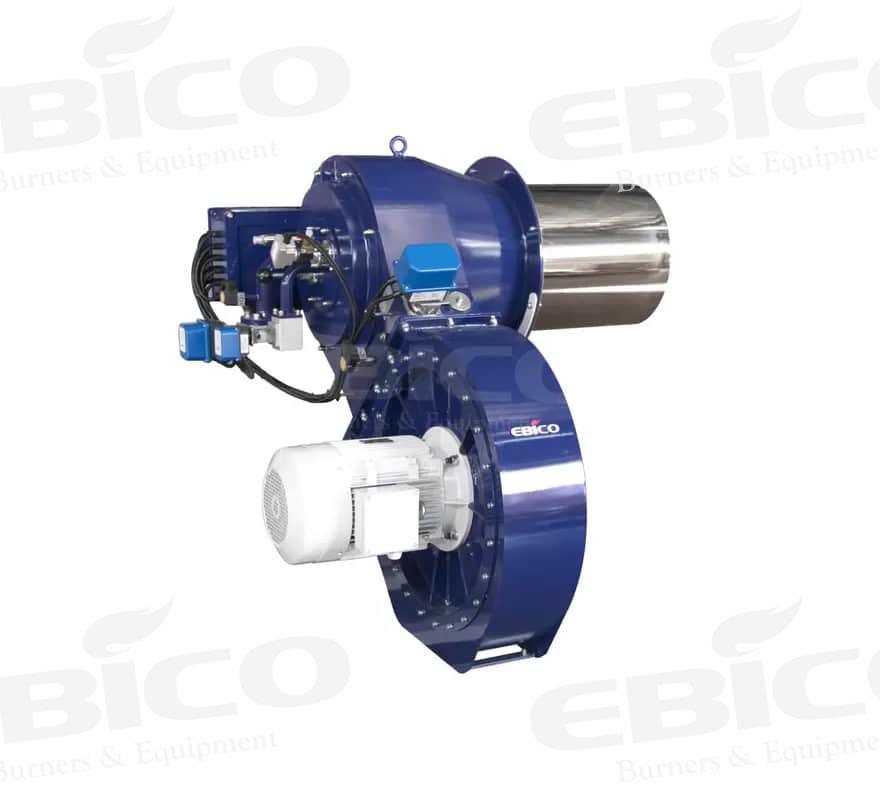How To Correctly Select Fuel For The Burner
How To Correctly Select Fuel For The Burner
Correct selection of fuel is an important part of burner operation. Therefore, it is necessary to master the characteristics of fuel, understand the combustion principle, and select fuel according to the fuel type required by boiler design, so as to achieve the design requirements and expected results. According to the physical state, the fuel used in the burner can be divided into three categories: solid fuel, liquid fuel, and gas fuel.

First: Solid Fuel
Solid fuels include the following categories:
1. Bituminous coal: called long bituminous coal, it is gray-black, or black, and its surface is matte or oily.
2. Anthracite: called white coal or firewood coal, it is black and sometimes gray, hard and brittle, with shiny sections.
3. Lean coal: between bituminous coal and anthracite, its volatile matter is 10%~20%, which is easier to catch fire.
4. Coal gangue: This is a kind of combustible stone in the coal seam. Its ash content is high, up to more than 50%, and its calorific value is low, so it is not suitable for fire.
5. Oil shale is an oil-bearing mineral with ash content of 50% – 70% and volatile content of 80% – 90%, which is easy to catch fire.
6. Firewood: compared with coal, it has less ash, high volatile matter, fast combustion speed, but low calorific value.
Second: Liquid Fuel
There are three kinds of liquid fuels commonly used in Burners: heavy oil, residual oil, and light diesel oil. Because the fuel contains a lot of carbon and hydrogen, the moisture content is low, so the calorific value is very high. Diesel oil is widely used in the ignition and stable combustion of small and medium-sized thermal power plants, domestic boilers, and large boilers, and heavy oil is mostly used in power station boilers.
1. Diesel fuel: diesel fuel has low density, which is a fuel with low viscosity, good fluidity, no preheating, and can be started by direct ignition. It can be started by direct ignition. The sulfur content in diesel fuel is less, and the environmental pollution is also small.
2. Heavy oil: heavy oil is the light fraction refined from the petroleum refining process – the general name of the heavy fraction after gasoline, kerosene, and diesel. The main components of heavy oil are carbon and hydrogen, with little ash and water content, and high and stable calorific value.
3. Residual oil: residual oil is the residue produced by petroleum refining. Its main components are high molecular alkanes, colloidal substances, etc., which can be directly used as fuel. The viscosity of residual oil is large, and it can flow when heated to a certain temperature. Its storage, transportation, and management are very convenient.
Third: Gaseous Fuel
Gaseous fuel is a kind of gaseous fuel at normal temperatures. Compared with various solid fuels and liquid fuels, it has very prominent advantages: less pollution, high calorific value, convenient operation, etc. it is an ideal high-quality boiler fuel. There are two kinds of gas fuels: natural gas fuel and artificial gas fuel.
1. Natural gas fuel: natural gas fuel includes gas field gas and associated gas of oil fields. Gas field gas is a kind of combustible gas from a pure gas field, and the associated gas of an oil field is the combustible gas produced in the process of oil exploitation. The above two natural gaseous fuels are mainly composed of methane, but also contain a small number of alkanes, olefins, carbon dioxide, hydrogen sulfide, and nitrogen, both of which have high calorific values. Because natural gas is an important chemical raw material, only a few boilers near the production area can use natural gas as fuel.
2. Artificial gas fuel: there are many types of artificial gas fuel, including blast furnace gas, coke oven gas, producer gas, and liquefied petroleum gas. In addition to liquefied gas, other calorific value gases are all low. Although blast furnace gas and coke oven gas have low calorific value, they are mainly used as chemical raw materials and fuel for various heating furnaces, and only a small amount of them are used locally as boiler fuel. Producer gas and liquefied petroleum gas are generally not used as boiler fuel.
